DRIVELINE VIBRATION AND/OR PHASING BOOM

VEHICLES AFFECTED: 1984 Cadillac 'D' Series Vehicles
Some 1984 Devilles and Broughams may experience a driveline vibration and/or phasing boom from 86 to 105 KM/H (55 to 65 mph.). To correct this condition, perform all of the service procedures listed in this bulletin. The service parts required to complete this service procedure are listed below:
1. Pinion Flange P/N 7827670 2. Dampener Kit P/N 1628581 3. Body Mount Kit P/N 1628832
I. Refer to Section OA of the 1983 Cadillac Service Information Manual to determine if the vibration is road speed sensitive. If the vibration is road speed sensitive, proceed to step 2; if not, refer to the appropriate section of the Service Manual.
II. Check pinion flange runout. Refer to Figure 1.
A. Check pinion flange runout as follows:
1. Install pinion flange runout gauge J-34601 using the same bolts and straps as used to install the propeller shaft (refer to Figure 1).
2. Rotate the pinion flange one complete revolution and zero indicator at the point of the lowest reading.
3. Rotate the pinion flange until the dial indicator shows maximum reading.
4. If runout exceeds .006 inch Total Indicator Runout (T.I.R.), the pinion flange should be indexed 180 degree in relation to the pinion, and runout should be checked again. If the runout is still in excess of .006 inch, replace the pinion flange (and repeat Step A).
5. If the pinion flange was reindexed in step 4 and the T.I.R. is .005 inch or less, remove the compensating weight from the front of the pinion slinger (refer to Figure 1). If in step 3 the T.I.R. was .006, there should be a compensating weight attached to the front side of the slinger nearest the maximum indicator reading. If there is no weight attached to the slinger, the pinion flinge must be indexed until the T.I.R. is .005 inch or less. If not .005 inch or less, replace the pinion flange (and repeat step A).
III. Reindex the propeller shaft to all possible locations on the pinion flange and evaluate. Reinstall the propeller shaft in the position of the least amount of vibration.
IV. Check propeller shaft rear universal joint angle as follows:
A. Place inclinometer on rear propeller shaft bearing cap. Centre bubble in sight glass and record measurement. Bearing cap must be straight up and down and free of dirt or other foreign material to obtain an accurate measurement (refer to Figure 3).
B. Rotate propeller shaft 90 DEG and place inclinometer on rear drive yoke bearing cap. Centre bubble in sight glass and record measurement (refer to Figure 4).
C. Subtract smaller figure from larger figure to obtain the rear universal joint angle (refer to Figure 5).
D. If not within specifications, loosen all eight rear control arm bolts and jack the pinion nose up.
E. With the pinion nose up and with the rear axle assembly raised to its full loaded position, torque the control arm bolts. Using this procedure, bring the angle as close to the specification as possible, approximately a 1 DEG improvement should be reached.
V. Check propeller shaft front universal joint angle.
A. Due to revisions in production tolerances, the inclinometer adaptor (J-23498-20) may not fit onto some front cardan joints because of interference with the transmission crossmember. To revise the adaptor to make it fit on cars with a single cardan propshaft, follow the procedure below:
1. Cut off the thumbscrew with a hacksaw (refer to Figure 6). Discard thumbscrew.
2. Using an allen wrench (refer to Figure 6), loosen the screw from the inside of the tool until the two pieces of the tool separate.
3. Insert a washer approximately 4 1/2 mm (3/16 inch) thick between the two pleces of the tool and hold in place by reinstalling the screw (refer to Figure 6).
4. Grind off the end of the screw until it is flush with the tool.
B. Place inclinometer adaptor on front propeller shaft bearing cap. Place the inclinometer on the adaptor then centre the bubble in sight glass and record measurement (refer to Figure 7).
C. Rotate propeller shaft 90 DEG and place inclinometer adaptor in front slip spline yoke bearing cap. Place the inclinometer on the adaptor then centre the bubble on sight glass and record measurement (refer to Figure 8).
D. Subtract smaller figure from larger figure to obtain the front universal joint angle (refer to Figure 5).
E. If not within specifications, shim between the transmission and the transmission mount as necessary.
VI. With both rear tire and wheel assemblies removed, reinstall wheel lug nuts with flat side next to drum then check propeller shaft balance as follows:
A. Mark and number propeller shaft at four points 90 DEG apart at rear of shaft just forward of balance weight.
B. Install two hose clamps on the swedged down portion of the propeller shaft. Align both clamps to any one of the four marks made on the shaft in step A. Tighten the clamps. Be sure sufficient clearance is maintained so that claim heads do not contact floor pan of car.
C. Run the car through the speed range to 80-88 kph (50-55 mph). Note amount of unbalance.
D. Loosen clamps and rotate clamp heads 90 DEG to next nark on shaft. Tighten clamps and repeat step C.
E. Repeat step D until car has been run with clamp heads located at all four marks on the shaft.
F. Position clamps at point of minimum unbalance. Rotate the clamp heads away from each other 45 DEG, one each way from the point of minimum unbalance (refer to Figure 9). Run the car and not if unbalance has improved.
G. Continue to rotate the clamps apart in smaller angular increments until the feel for unbalance is best.
VII. After all of the above mentioned steps are performed and if the vibration still exists install vibration dampener P/N 1628581) on the left rear axle tube and torque to 40 N.m (29.5 ft. lbs.) (refer to Figure 10).
A. If there is an interference condition between the dampener and the stabilizer bar, it may be necessary to install a piece of rubber hose over the stabilizer bar (refer to Figure 10).
NOTICE: DO NOT CLAMP THE 'U' BOLT OVER THE REAR BRAKE PIPE.
VIII.Install the body mount kit (P/N 1628832) in tye number four position using the production washers used in place of rebounds on 1984 models. After installing the body mount kit in the number four position, shim the number five mounts to unload in the number four position.
IX. Check tires and wheels for radial and lateral runout and for proper balance. (Refer to Section 3E of the 1983 Service Manual.)
Use most applicable labour operation from Canadian Labour Time Guide and claim 4.0 hours.
Add .4 w/locking wheel covers.
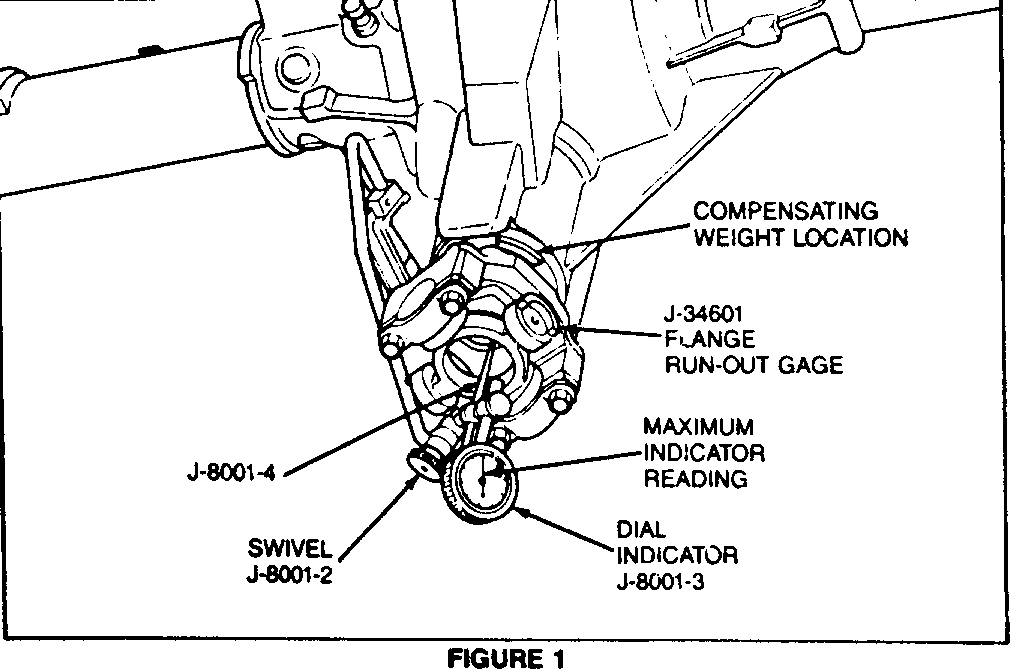
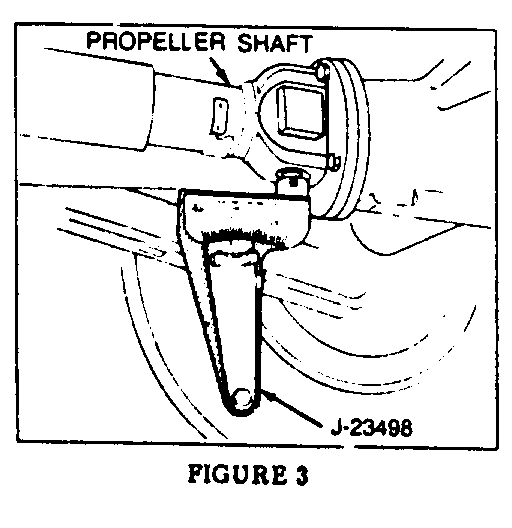

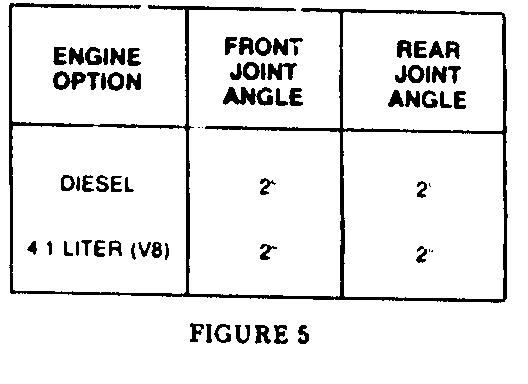
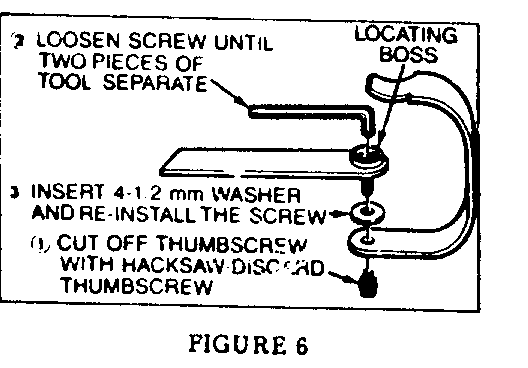
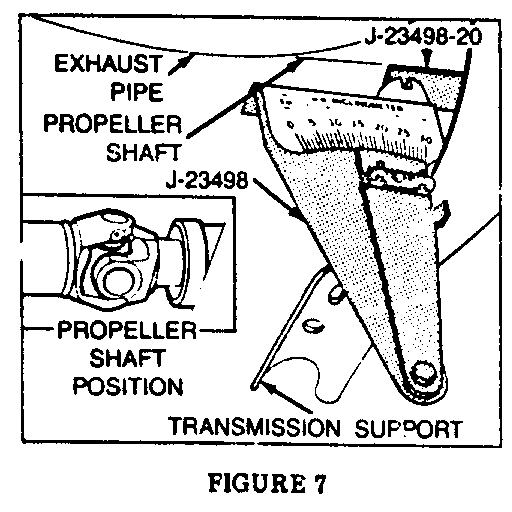
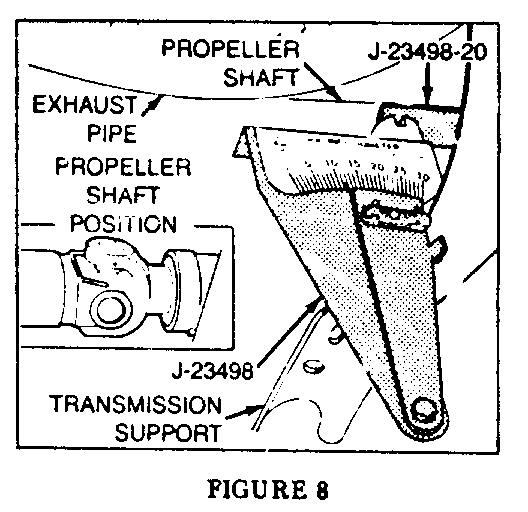
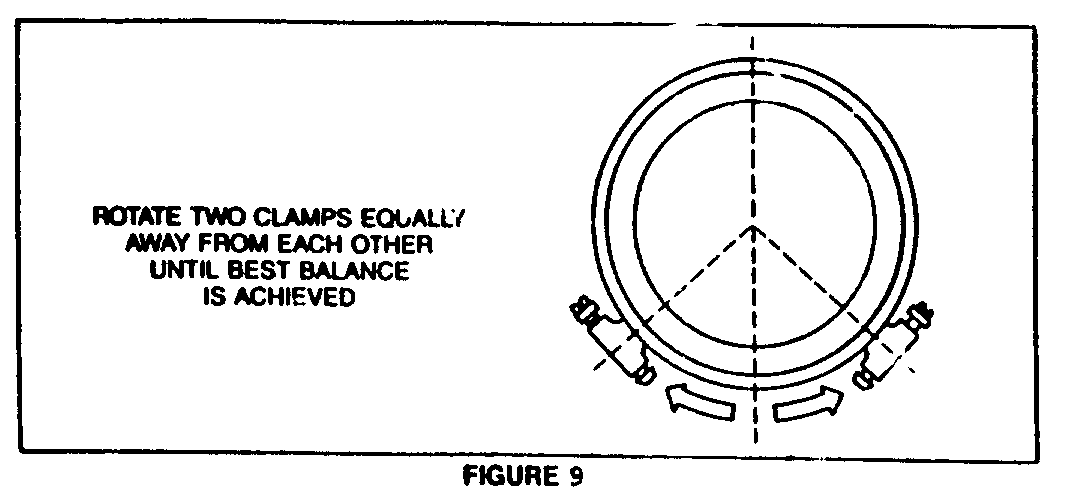
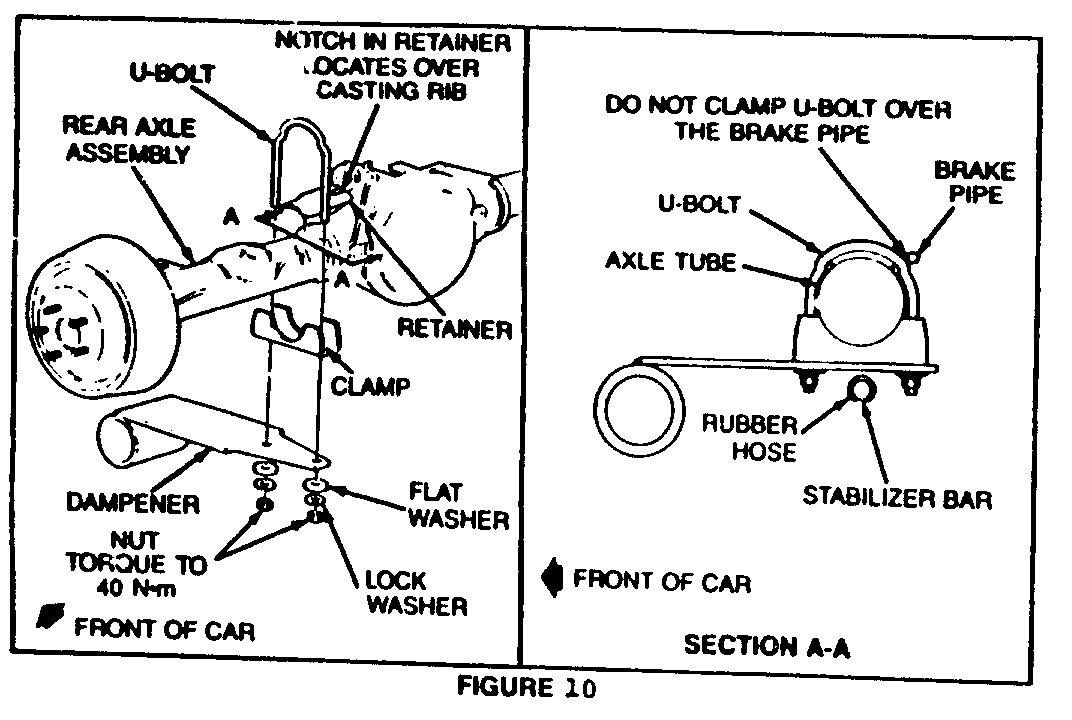
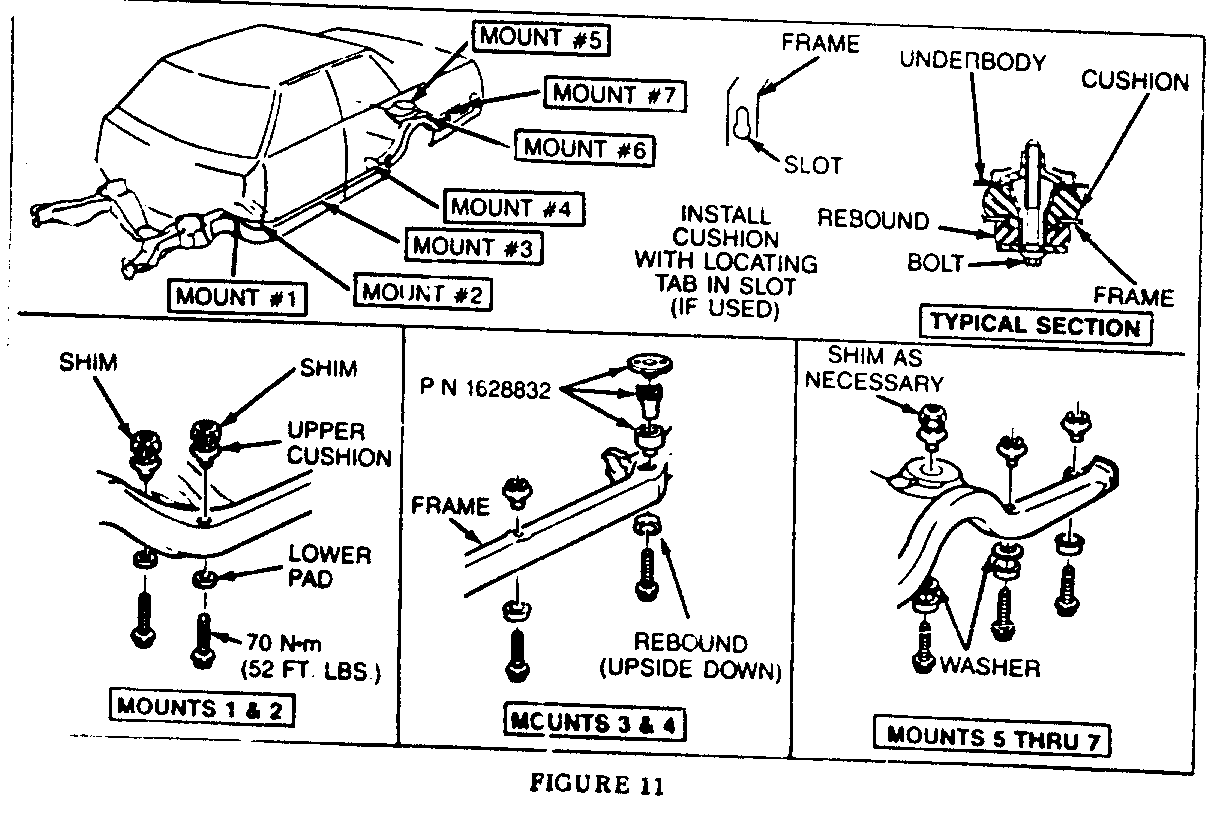
General Motors bulletins are intended for use by professional technicians, not a "do-it-yourselfer". They are written to inform those technicians of conditions that may occur on some vehicles, or to provide information that could assist in the proper service of a vehicle. Properly trained technicians have the equipment, tools, safety instructions and know-how to do a job properly and safely. If a condition is described, do not assume that the bulletin applies to your vehicle, or that your vehicle will have that condition. See a General Motors dealer servicing your brand of General Motors vehicle for information on whether your vehicle may benefit from the information.
